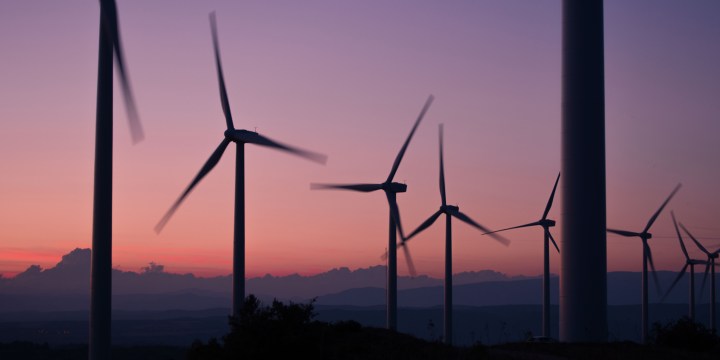RENEWABLE ENERGY
Wolf Wind project in Eastern Cape breezes one step closer to generating power for national grid

An 84MW Wolf Wind project in the Eastern Cape reached financial close on Wednesday, and is projected to start generating electricity for the national grid by the first quarter of next year.
However, the South African Wind Energy Association (Sawea) warns that several key focus areas require additional intervention and swift action, with a clearer scope of wind energy integration, mainly infrastructure investment in wind projects.
Juwi Renewable Energies reports that exploding public and private demand for large-scale renewables because of South Africa’s energy crisis has led to the rapid expansion of its national footprint, with more than 1.5GW of wind, 2GW of solar and 500MW of hybrid projects incorporating storage in development for private and public energy users.
The Wolf Wind project, two hours outside Gqeberha, was successfully bid by Red Rocket in Round 5 of the South African government’s Renewable Energy Independent Power Producers Procurement Programme (REI4P). Wolf Wind is the second wind project developed by Juwi to reach financial close under the REI4P — the first being the 138MW Garob Wind Project, which reached commercial operation in 2021.
Richard Doyle, the managing director of Juwi South Africa, says Juwi plans to initiate the development of a further combined 1GW of wind, solar and hybrid projects this year. The Wolf Wind Project is expected to generate more than 360GWh of clean electricity for the South African grid each year, offsetting 374,400 tonnes of CO2 each year. The project is expected to usher in more than R200-million worth of community investment over 20 years through local social projects, according to Matteo Brambilla, chief executive of bidder Red Rocket.
“A key barrier to bringing large projects like Wolf online is grid capacity,” says Chris Bellingham, head of project development for Juwi South Africa.
“While we are working on ways to overcome the challenges imposed on many of our projects by the Cape grid constraints, to meet the significant and growing demand for clean reliable power, we’re also actively developing a large portfolio of new and regionally diverse projects in unconstrained areas of the country’s grid.”
Positive economic contribution
Wind, as one of the most cost-effective renewable energy sources, has significantly demonstrated its positive economic contribution with a total procurement by wind IPPs during construction and operations to date exceeding R9-billion in value.
Sawea’s chief communications officer, Morongoa Ramaboa, says renewable energy is being embraced by the government through the Just Energy Transition investment plan, as well as the prioritisation of solar, wind, gas and storage projects at nine of Eskom’s power stations.
“We believe that this will ultimately support our urgent need for energy security, effectively reducing load shedding and the resulting detrimental impact on our green economy.”
Ramaboa says Sawea welcomes the government’s approach to accelerate private investment in generation capacity, through the removal of the licensing requirement for generation projects of any size, the reduction of timeframes for regulatory approvals, as well as the establishment of a “one-stop shop” for energy projects through Invest SA.
However, she notes that there is room for public and private procurement to ensure that energy security is achieved across the entire value chain.
“The ideal is to create an environment that encourages and accelerates investment injection into the economy, removing the pressure from public fiscus, and to stimulate the private sector to invest in their own energy supply and create new industries,” she says.
Niveshen Govender, the chief executive of Sawea, says a clearly defined queueing system needs to be urgently implemented with a balanced view between publicly and privately procured electricity.
“Ministerial determination for over 18,000MW of new generation capacity from wind, solar and battery storage should be prioritised since it was published in August last year,” he says, noting that the intention to enable businesses and households to invest in rooftop solar, is a good start towards addressing the country’s energy crisis. This requires the development of a net billing framework for municipalities to enable customers to feed electricity from rooftop solar installations into the grid.
Ramaboa says Sawea is looking at investment opportunities to integrate wind energy for the use of businesses and households to supplement the use of PV panels, especially in areas that are prone to strong wind conditions.
“In order to realise our vision of becoming a thriving commercial wind power industry that supports government in its mandate to secure energy for South Africa, we cannot afford a repeat of the latest failed public procurement bid window (BW6), which has resulted in the loss of investment and market confidence.
“The current system for allocating grid access remains a pressure point as it marginalises capable and willing organisations that can contribute significantly to the supply of electricity,” Govender says. DM/BM



















 Become an Insider
Become an Insider
Comments - Please login in order to comment.